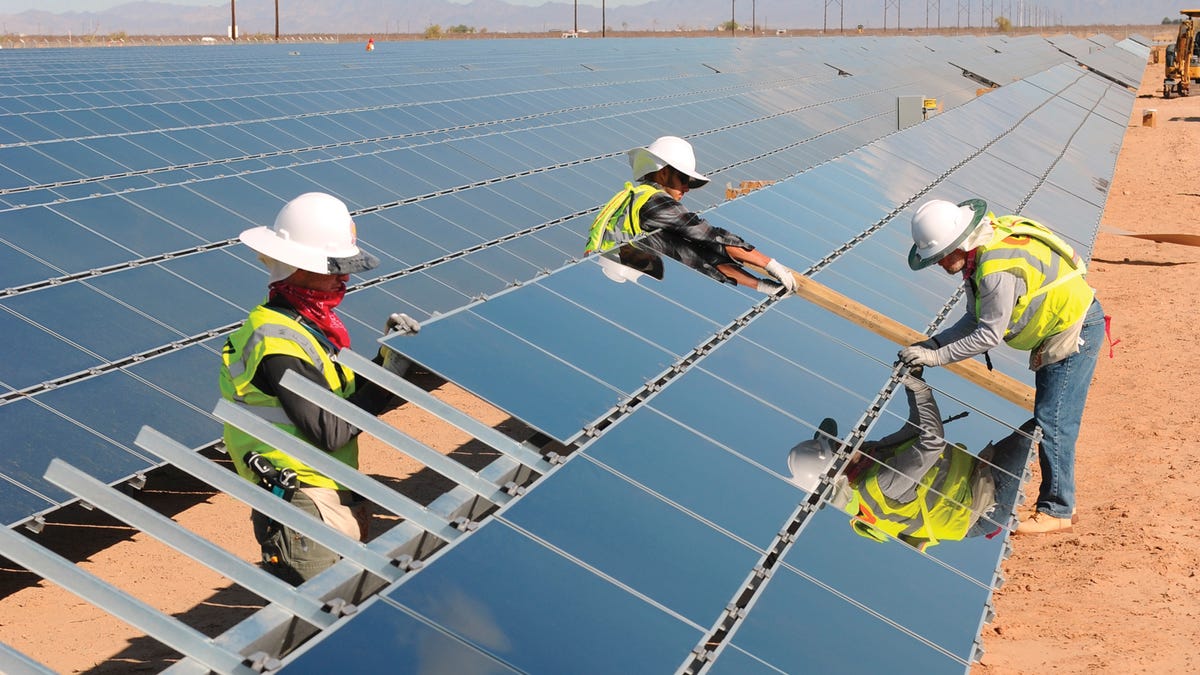DOE nails down loans for giant solar projects
Amid increased scrutiny of the loan guarantee program because of Solyndra, the Energy Department finalizes four more loans for projects which will lead to a jump in U.S. solar power production.

The U.S. Department of Energy today finalized financing for four utility-scale solar projects, capping a week of intense activity amid heightened political scrutiny on the loan guarantee program.
The solar projects are: Project Amp, for the installation of 752 megawatts' worth of solar power on about 750 commercial rooftops; a partial loan guarantee for the 550-megawatt Desert Sunlight project in California; the 230-megawatt Antelope Valley Solar Ranch 1 Project in California; and the 250-megawatt California Valley Solar Ranch project.
Among the four projects, the Department of Energy will guarantee financing worth more than $4.7 billion. Earlier this week, the Energy Department finalized loan guarantees worth $1 billion for two solar power plants and one cellulosic ethanol biorefinery.
The flurry of activity comes because today is the deadline for the portion of the loan guarantee program created with the stimulus plan in 2009. With the completed loan guarantees today, at least 11 utility-scale solar projects will now move toward construction which, if completed, will mark a major increase in the amount of renewable energy on the U.S. grid.
With the bankruptcy of loan recipient and solar manufacturer Solyndra, some politicians have criticized the loan guarantee program and federal funding for clean-energy technologies, in general.
But the bulk of the loan guarantees in solar, wind, and geothermal are being used to finance energy projects, which are substantially less risky than loans to build manufacturing plants, say analysts. Unlike a factory, large-scale solar-project developers contract with utilities to buy the energy they provide for 25 years, said Brett Prior, analyst at GTM Research.
Related stories
• Solar power plant switches to PV from thermal
• Solyndra's burnout burdens other solar upstarts
• Solyndra fallout could tank solar for military bases
The loan guarantee program will also bring emerging energy technologies and business models to market at large scale. For example, BrightSource Energy received a loan guarantee for the Ivanpah solar project in California, which will use concentrating solar tower technology at very large scale. Other solar technologies to be rolled out at larger scale are concentrating photovoltaics and solar plants with molten storage able to supply power 12 hours a day.
"For new technologies, they would've had a harder time convincing big banks," Prior said. "By having the first one built using loan guarantees, it makes the second round easier to finance."
Project Amp, set to be the largest rooftop solar installation in the U.S., will bring a business model which will help lower solar costs and could serve as a model for other solar projects, Energy Secretary Steven Chu said in a statement. Commercial customers essentially rent their rooftops in exchange for fixed power rates for 20 years from the solar panels.
But even as these loan guarantees were being finalized, a few remain up in the air. Prior counted at least four large solar projects which have not been finalized. Since none of them involves new technologies, project developers could seek out commercial lenders, though at less advantageous lending terms, he said.
One project to supply solar power to hundreds of military bases appears to have been derailed because of the political upheaval around Solyndra. Last Friday, solar installer SolarCity said that its SolarStrong project was imperiled because there were requests from Congress to review its application, causing enough delay to derail the entire project.
Two of the utility-scale projects finalized today--the Desert Sunlight and the Antelope Valley 1 projects--are expected to use solar panels from First Solar. Chicago-based utility Exelon today announced that it purchased the Antelope Valley project from First Solar, saying it will come online in late 2013 and use 3.8 million panels to power enough for 75,000 homes per year.
With the loan guarantee program, the Energy Department backs loans and companies involved secure financing from private or public sources.

